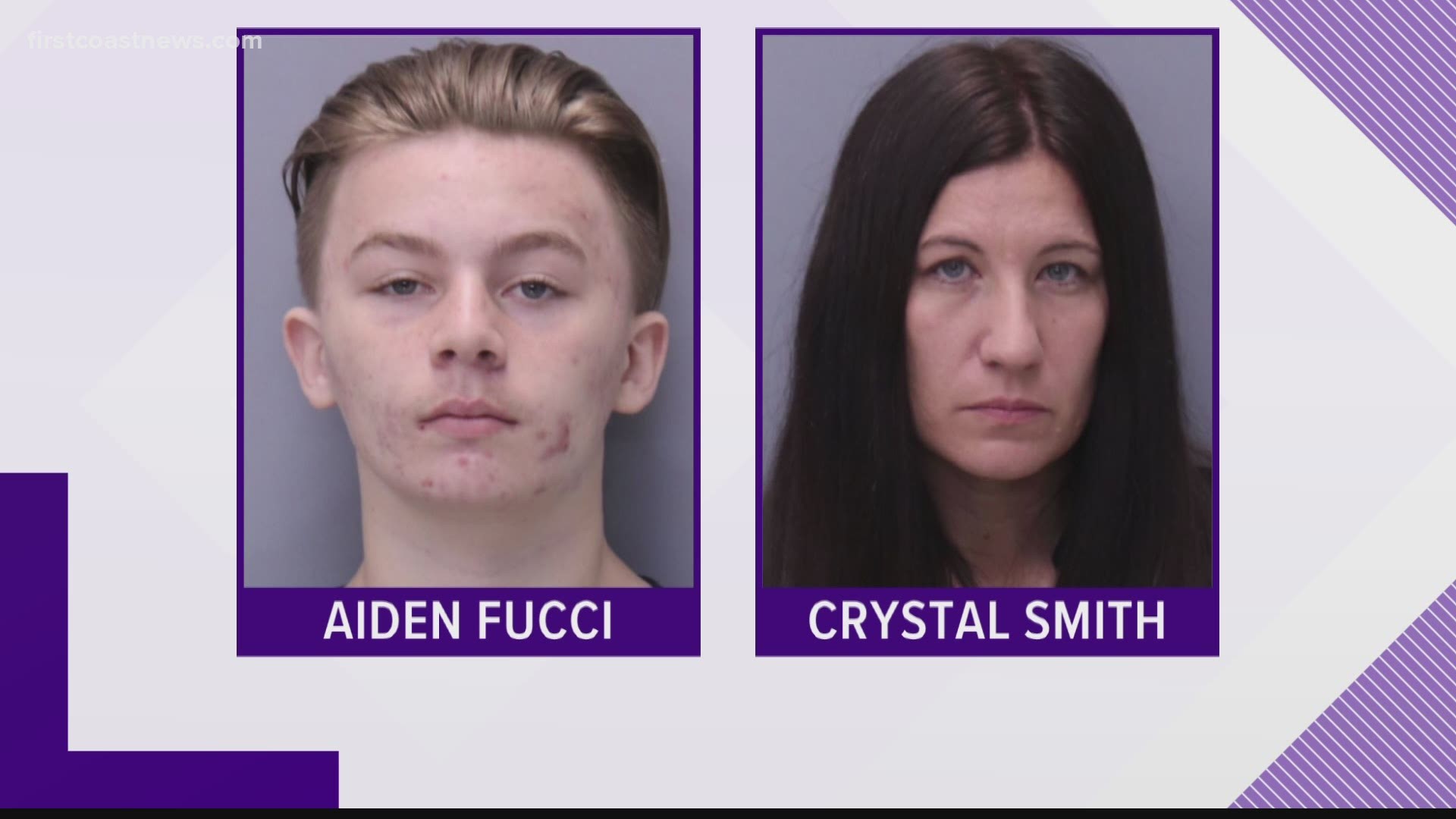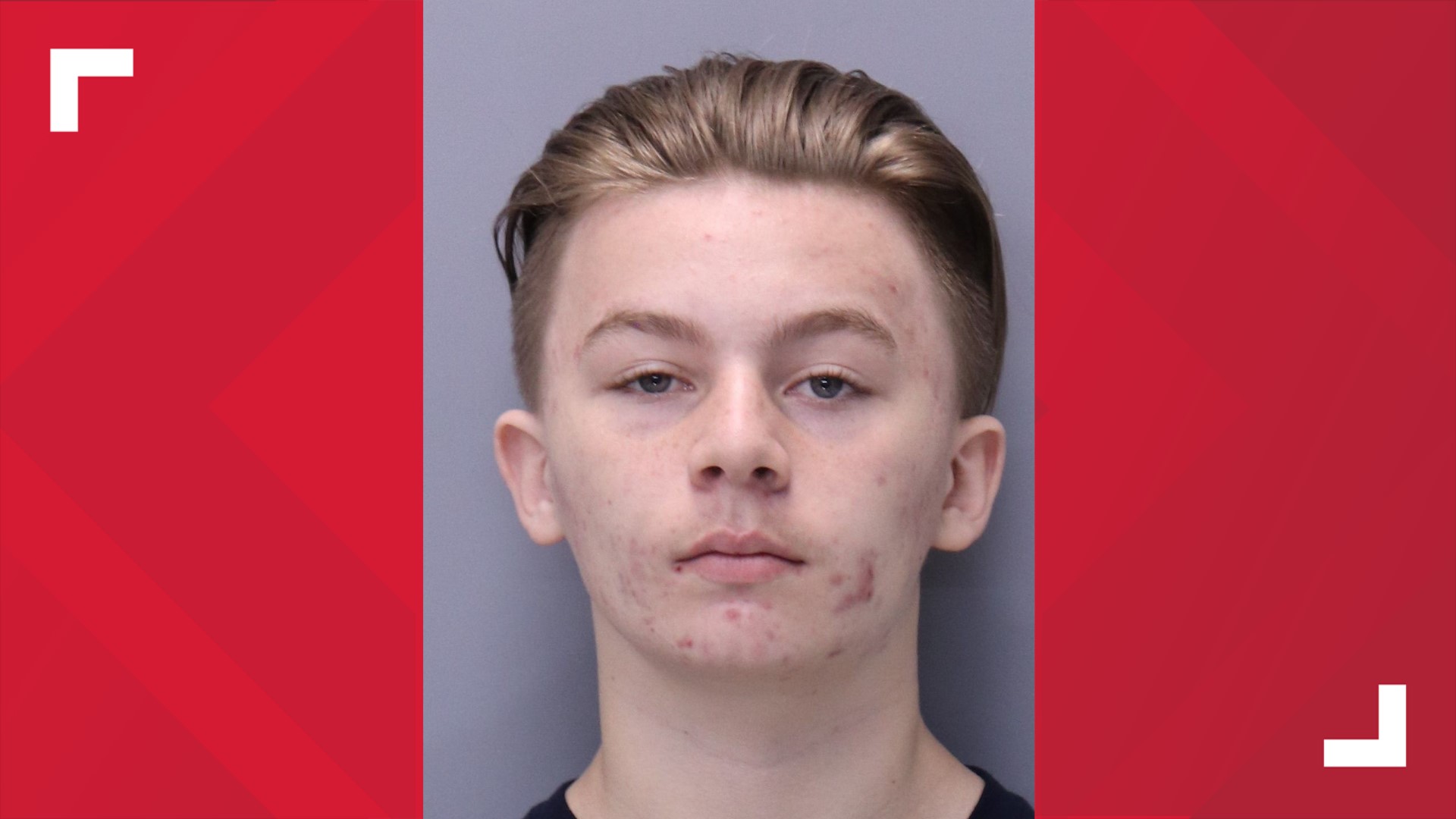Introduction to Aiden Fucci
Aiden Fucci is a name that has drawn significant media attention due to the tragic events surrounding his involvement in a high-profile criminal case. Born in 2003, Fucci was just 14 years old when he became embroiled in allegations that would forever alter the lives of many, including the family of the victim. The case centers on the stabbing and murder of 13-year-old Tristyn Bailey, which took place in May 2021 in St. Johns County, Florida. The nature of this incident, involving young individuals and encompassing themes of violence and youth crime, has sparked a greater conversation about societal influences on adolescents.
The circumstances leading to the crime reveal a complex interplay of psychological, social, and environmental factors. Aiden Fucci’s background, including his upbringing and the community in which he was raised, offers insights into the potential motivations that may have contributed to his actions. Reports indicate that Fucci displayed troubling behaviors prior to the incident, prompting discussions among mental health professionals regarding the signs of distress that can manifest in adolescents. Additionally, the case has raised questions about juvenile justice and the legal approaches applicable to minors in such heinous situations.
Beyond the immediate facts of the case, the Fucci saga has resonated emotionally with the public and has raised broader issues concerning crime among youth. The media coverage of Aiden Fucci has underscored fears surrounding violence in schools and among teenagers, as well as the responsibilities of parents and communities to safeguard young individuals. As this case continues to unfold in the legal system, it serves as a poignant reminder of the complexities surrounding crime, mental health, and the judicial process. This introduction sets the stage for a deeper exploration of the numerous facets of the case, allowing readers to gauge the myriad impacts of Aiden Fucci’s actions and the societal implications therein.
The Incident: What Happened?
The case involving Aiden Fucci is both tragic and complex, centering around the events of May 9, 2021, in St. Johns County, Florida. On this day, the community was shaken by the disappearance of 13-year-old Tristyn Bailey, a local middle school student. Tristyn was last seen early in the morning while leaving her home. Her family quickly reported her missing, prompting an extensive search involving law enforcement and the local community.
As the investigation unfolded, suspicions began to focus on Aiden Fucci, also 14 years of age at the time. Fucci, a classmate of Tristyn, was identified as one of the last individuals to see her before her disappearance. Authorities conducted interviews and investigated Fucci’s social media presence, arousing interest in his activities that night. The search for Tristyn continued until May 10, when her body was discovered in a wooded area near a nearby neighborhood. Tragically, she had sustained multiple stab wounds, revealing a gruesome sequence of events that struck fear and disbelief within the community.
Aiden Fucci was subsequently arrested on May 10, 2021, and charged with second-degree murder, raising significant concern regarding youth violence and crime. The filing of charges against Fucci initiated extensive media coverage, giving rise to conversations about juvenile accountability in the criminal justice system. Public interest in the case sparked debates on the environmental and societal factors that may influence youth behavior. As the community grappled with the loss of a vibrant young life, the implications of this violent incident would be felt far beyond St. Johns County.
Investigation and Arrest

The investigation into the case involving Aiden Fucci was a complex and multifaceted process, initiated in response to a tragic event that drew significant public attention. Law enforcement agencies were called to the scene shortly after the discovery of the victim, which set the stage for a thorough and methodical approach to gathering evidence. Detectives began their work by conducting interviews, collecting witness statements, and securing the crime scene to preserve any potential evidence. The initial efforts aimed to establish a timeline of events that led up to the incident.
One key aspect of the investigation involved forensic experts, who meticulously analyzed various physical evidence discovered at the scene. This analysis included biological samples, fingerprints, and any other materials that could provide insights into the circumstances surrounding the crime. The detectives worked alongside these specialists, ensuring that proper techniques were employed to maximize the amount of information gleaned from the evidence collected.
Challenges arose during the investigation, particularly with the need to meticulously piece together the timeline and establish motives. Aiden Fucci’s age and the nature of the crime presented unique legal considerations that required law enforcement to navigate carefully. Additionally, the emotional toll on the community and the victim’s family added a layer of urgency to the investigation. As critical pieces of evidence emerged, it became clear that the case against Aiden Fucci was gaining traction.
Ultimately, the culmination of the investigative efforts led to the arrest of Fucci, marking a significant turning point in the case. The careful collection and analysis of evidence not only solidified the charges against him but also reflected the broader commitment of law enforcement to uphold justice while facing the complexities inherent in such a sensitive and tragic situation.
Legal Proceedings and Charges

The case involving Aiden Fucci has garnered significant attention due to the nature of the charges and the age of the defendant. Aiden Fucci, a minor at the time of the alleged crime, faced serious charges including first-degree murder in connection with the death of Tristyn Bailey. The legal proceedings have been complicated by Fucci’s age, as the juvenile justice system in Florida has different protocols and considerations than the adult system. This distinction plays a critical role in determining the potential outcomes and the type of rehabilitation or punishment that may be applicable.
Initial courtroom proceedings involved the arraignment where Fucci pleaded not guilty. The prosecution outlined its case, emphasizing the premeditated nature of the alleged crime, arguing that the evidence pointed to a calculated act. On the other hand, the defense sought to challenge the prosecution’s evidence and cast doubt on the intentions attributed to Fucci, arguing that his age and psychological development should be taken into account. These elements highlighted the ongoing debate about juvenile offenders and appropriate sentencing frameworks.
As the case progressed, various plea deal negotiations arose. The prosecution maintained a firm stance against reducing the charges, expressing the need to uphold accountability for severe crimes, even when involving juveniles. Significant legal arguments were presented concerning the impact of Aiden Fucci’s age on his culpability and the broader implications for juvenile justice reform. The complexities surrounding this case underscore the delicate balance the legal system must strike in addressing youth crime while ensuring public safety. The outcome of Fucci’s trial will undoubtedly continue to influence discussions around juvenile justice and the treatment of young offenders within the legal framework.
Public Reaction and Media Coverage

The case of Aiden Fucci, primarily recognized for its tragic and brutal circumstances, garnered significant attention from the public and media alike. The heinous nature of the crime led to widespread discussions across various platforms, particularly on social media. In the wake of the incident, individuals across different demographics expressed a multitude of reactions, ranging from intense outrage to an outpouring of sympathy for the victim’s family. The palpable tension surrounding this case illuminated deep-seated concerns regarding juvenile justice and the societal implications of such violent acts.
Media outlets followed the proceedings closely, providing detailed coverage that examined the timelines, court hearings, and the public’s evolving sentiment. Major news channels and newspapers dedicated extensive resources to reporting updates on Aiden Fucci’s case, often featuring expert opinions from legal analysts who dissected the implications of the charges against the young defendant. This level of media scrutiny not only informed the public but also shaped the discourse surrounding issues of youth crime and accountability.
Moreover, social media platforms became a hotbed for discourse. Hashtags and trending topics related to Aiden Fucci emerged, as users shared thoughts and theories about the case. The rapid dissemination of information, alongside personal anecdotes and emotional responses, contributed to a polarized public opinion. Some users advocated for severe penalties, reflecting a desire for justice, while others called for a more compassionate approach, considering Fucci’s age and psychological profile. This duality of reactions illustrates the complexities inherent in societal views on crime and punishment, particularly when youth are involved.
Impact on Victim’s Family and Community

The heinous crime involving Aiden Fucci has profoundly affected the victim’s family and the surrounding community. For the family, navigating the emotional landscape following such a tragic loss is immeasurable. Grief often manifests in diverse ways, impacting each family member differently, with some finding solace in shared memories and others struggling with intense feelings of anger and despair. The psychological ramifications are equally significant, as the family may grapple with unresolved questions and seek justice in the wake of such violence. Such trauma often necessitates long-term counseling and support, underscoring the need for resources dedicated to families affected by violent crimes.
Beyond the immediate family, the local community has been shaken to its core. Community responses following the incident include an outpouring of support for the victim’s family, with vigils and memorials serving as platforms for collective mourning. Such events can foster a sense of solidarity among community members, as they unite to honor the victim’s memory while also calling for justice. In many cases, these gatherings serve to raise awareness about the broader issues surrounding youth violence and its repercussions, transforming individual tragedy into a catalyst for social change.
The Aiden Fucci case has also sparked discussions about local policies concerning youth crime and violence prevention. Community leaders and activists are pushing for reforms that address the root causes of such violent behavior, emphasizing the importance of mental health support, educational programs, and family intervention initiatives. Whether through workshops, community forums, or policy advocacy, there is an increasing recognition that proactive measures are crucial to preventing future tragedies. As the community reflects on the implications of this case, the hope remains that positive change can emerge from profound sorrow, fostering a safer environment for all youth.
Psychological and Sociological Aspects

The case of Aiden Fucci has drawn significant attention not only for its tragic nature but also for the psychological and sociological factors that may have influenced his actions. Understanding the psychological profile of Aiden Fucci is crucial in analyzing his behavior. Research indicates that individuals who engage in violent acts may possess certain personality traits or mental health issues, such as antisocial personality disorder or conduct disorder. It is important to consider that such psychological disorders can stem from various influences, including genetic predisposition and environmental factors.
Moreover, familial circumstances play a fundamental role in shaping an individual’s behavior. In the case of Aiden Fucci, a closer examination of his family dynamics and early upbringing could provide insights into his psychological development. Dysfunctional family environments, characterized by neglect, abuse, or lack of emotional support, can contribute to the manifestation of violent behaviors in adolescents. Furthermore, Aiden Fucci’s peer relationships and social interactions may have also impacted his decision-making and propensity for violence.
Sociologically, the theories of youth violence highlight the significance of societal influences, such as socioeconomic status, community conditions, and exposure to violence in the environment. Aiden Fucci’s actions can be seen in the broader context of youth violence trends, which are often exacerbated by various societal issues, including media influence and access to weapons. The impact of modern technology, such as social media, cannot be overlooked; it can sometimes glorify violence and contribute to a culture of aggression among youth. Thus, analyzing the case of Aiden Fucci involves not only a focus on his individual psychological traits but also a broader investigation into the sociological factors that may have played a pivotal role in his actions. This integrated approach offers a more comprehensive understanding of the underlying issues related to youth violence.
Treatment and Rehabilitation Perspectives
:max_bytes(150000):strip_icc():focal(734x459:736x461)/tristyn-bailey-aiden-fucci-39d70913b28e4fe3b3a1b143258a01b3.jpeg)
The treatment and rehabilitation of minors involved in serious crimes is a complex issue that elicits varied perspectives among stakeholders in the juvenile justice system. Aiden Fucci, a minor implicated in a highly publicized crime, serves as a potent case study for examining the effectiveness and limitations of rehabilitation options available for juvenile offenders. Advocates for rehabilitative approaches argue that young individuals possess the capacity for change and should not be defined solely by their actions. This perspective emphasizes the significant role of psychological support, education, and community programs tailored to the needs of juveniles.
Proponents of this approach contend that minors, including those whose actions led to severe consequences, such as Fucci’s case, may demonstrate developmental immaturity and a lack of understanding regarding the repercussions of their behaviors. Theories surrounding brain development in young people highlight that their decision-making processes are still maturing, suggesting that rehabilitation could prevent future offenses more effectively than punitive measures alone. Programs focusing on therapy, mentorship, and skill-building can aid in addressing underlying issues that contribute to criminal behavior, ultimately fostering a more restorative approach.
However, there are contrasting views regarding the efficacy of such rehabilitative efforts. Critics assert that serious crimes warrant stringent measures, and they express concerns over the potential risks of reoffending. In high-stake situations like the Aiden Fucci case, some advocate for the consideration of safety and justice for victims and their families. This perspective often leads to calls for harsher sentencing, reflecting a belief that some actions may be too severe for rehabilitative efforts to be genuinely effective. This debate continues to evolve, weighing the dignity of rehabilitation against the realities of justice for heinous acts. Understanding the nuances in these arguments is essential in shaping future policies regarding juvenile justice and rehabilitation frameworks.
Conclusion: The Legacy of Aiden Fucci’s Case
The case of Aiden Fucci stands as a poignant reminder of the complexities surrounding youth criminality and its repercussions on society. This troubling incident has provoked intense debate regarding how juvenile offenders are perceived and treated within the legal framework. As investigations into Aiden Fucci’s crime unfolded, they prompted discussions on the effectiveness of current laws governing juvenile justice and highlighted the need for possible reforms. Such discussions are pivotal in determining how society responds to young individuals who commit serious offenses.
One of the key implications of this case is the potential need for legislative change. Currently, many states have laws designed to protect juvenile offenders from the harshest penalties applicable to adults. However, Aiden Fucci’s actions have sparked conversations about whether these protections are sufficient or if they inadvertently minimize the consequences for heinous acts. The resulting dialogue emphasizes the necessity for a balanced approach that recognizes both public safety and rehabilitation for young offenders.
Moreover, Aiden Fucci’s case has significantly impacted societal attitudes toward juvenile delinquency. The unsettling nature of the crime has led many to question the efficacy of prevailing rehabilitation models, fostering an environment where punitive measures may be more readily considered. This shift in perception may influence how similar cases are adjudicated in the future, impacting the youths’ rights and the overall justice system framework.
Looking forward, it is crucial for stakeholders—lawmakers, mental health professionals, and educators—to engage in constructive dialogue about the implications of the Aiden Fucci case. Potential areas for future action might include evaluating existing judicial processes, enhancing mental health support for at-risk youth, and fostering community-based intervention programs. The legacy of this case serves as not just a cautionary tale but also an opportunity for robust discourse on how society can better address the complexities of juvenile crime.







